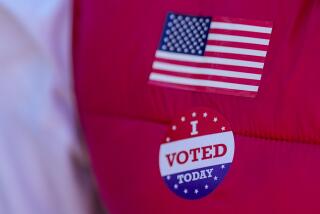NONFICTION - Feb. 18, 1996
- Share via
GOING NEGATIVE: How Political Advertisements Shrink and Polarize the Electorate by Stephen Ansolabehere and Shanto Iyengar (Free Press: $24; 243 pp.). Negative campaign advertising is bad for the country--that’s the unsurprising conclusion of a six-year study conducted by two political scientists at MIT and UCLA, respectively. Ansolabehere and Iyengar do uncover some eyebrow-raising particulars about such advertising, however, the most significant being that it drives independent voters from the polling booth and thus contributes directly to today’s electoral apathy and widespread animosity toward politicians. The authors’ conclusions aren’t entirely pessimistic--political advertising is often informative, they find, and positive campaigns can be effective--but confirm what most of us have long suspected: that negative campaigns affirm the beliefs of dyed-in-the-wool party loyalists and alienate everyone else, meaning that candidates “are just as likely to win by shrinking the electorate as they are to win by enlarging it.” And those “ad watch” stories run by newspapers, including The Times, that analyze campaign advertising? Ansolabehere and Iyengar say they don’t work, finding that in a controlled experiment the candidates whose advertisements were criticized in such “truth boxes” actually gained support. This isn’t a very compelling book, but it sums up an important study. It’s just too bad that “Going Negative” will probably lead to more effective negative campaign advertising rather than to its decline.
More to Read
Sign up for our Book Club newsletter
Get the latest news, events and more from the Los Angeles Times Book Club, and help us get L.A. reading and talking.
You may occasionally receive promotional content from the Los Angeles Times.







